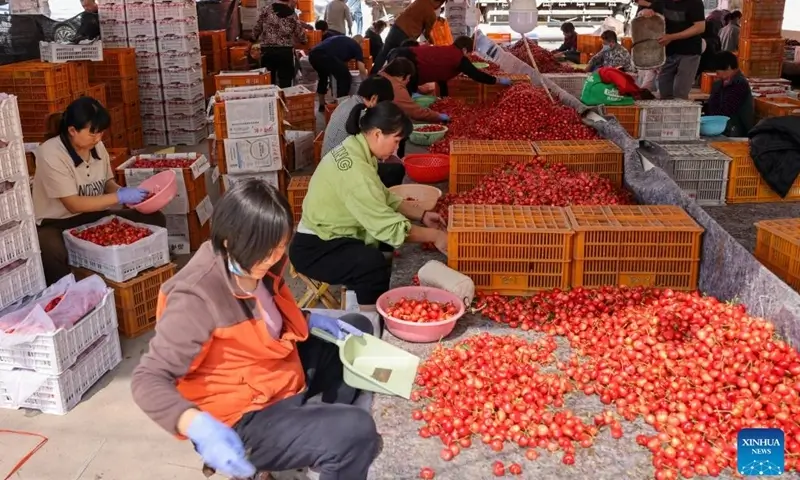The Fruittrade 2024, held from October 23 to 24 in Santiago, Chile, brought together the Chilean fruit industry to discuss the most urgent issues in the local and global market. One of the key points was the South American country's flagship product, cherries, which have started a historic season with sustained production growth.
An important consideration for Chilean cherries, however, is the economic state of their main buyer: China. Chinese trade expert Gonzalo Matamala, general manager of Giddings Cerasus Asia, with over 16 years of experience in the region, provided an overview of this vital market.
Economic Situation in China
To explain the current scenario in China, Matamala noted that 70% of personal wealth in China is held in property. “During the pandemic, property prices plummeted drastically, so now the Chinese feel that their wealth has also diminished,” he explained.
The decline in property values has had a strong impact on the Chinese economy, as construction has historically represented more than 30% of the country's economic growth. Export activity makes up a smaller portion of the Chinese economy, so post-pandemic, the country is experiencing a slowdown, which Matamala describes as “normal,” noting that endless growth has never been realistic.
Trends in the Chinese Market
Despite the slowdown in economic growth, per capita income is rising, indicating a financially more stable middle class. “We must understand that China is no longer a poor country, so, as all unions demonstrate, it is consuming more and more fresh fruit and food,” said Matamala.
An emerging trend in China is the decline in retail sales due to reduced disposable income perceived by consumers. However, Chinese exports remain strong thanks to massive production capacity and infrastructure, which, according to Matamala, “no country in the region can compete with at the moment.”

Sales and Employment
The drop in sales is partly due to rising rental costs, which has led retailers to explore new sales channels, such as online platforms. Urban unemployment remains around 4-5% but has risen significantly among younger generations.
“This is what should concern those of us who sell fruit the most because this segment is where we capture the most consumers,” Matamala observed. “Young people are the ones buying cherries, and if they face a high rate of unemployment, this reduces their purchasing power in the long term,” he added.
Cherry Market Forecast
Matamala emphasized that the cherry market is always unpredictable, but he shared valuable insights. “At Giddings Cerasus, we produce and import many U.S. cherries into Asia, which had an exceptional season, so the category is in a good place,” he said, adding that a decrease in volumes has supported the rise in prices.
Furthermore, with 30% of Chilean fruit undergoing cold treatment this season, customs will face an additional challenge, requiring greater organization. “We expect nearly 6,000 containers to inspect, which could strain customs officials' capacity,” he stated.
Matamala concluded by advising exporters to monitor the price cuts by Chinese retailers aimed at increasing accessibility, as these could impact the overall price of fruit during the season.
Source: Fresh Fruit Portal
Images: Global Times
Cherry Times - All rights reserved













